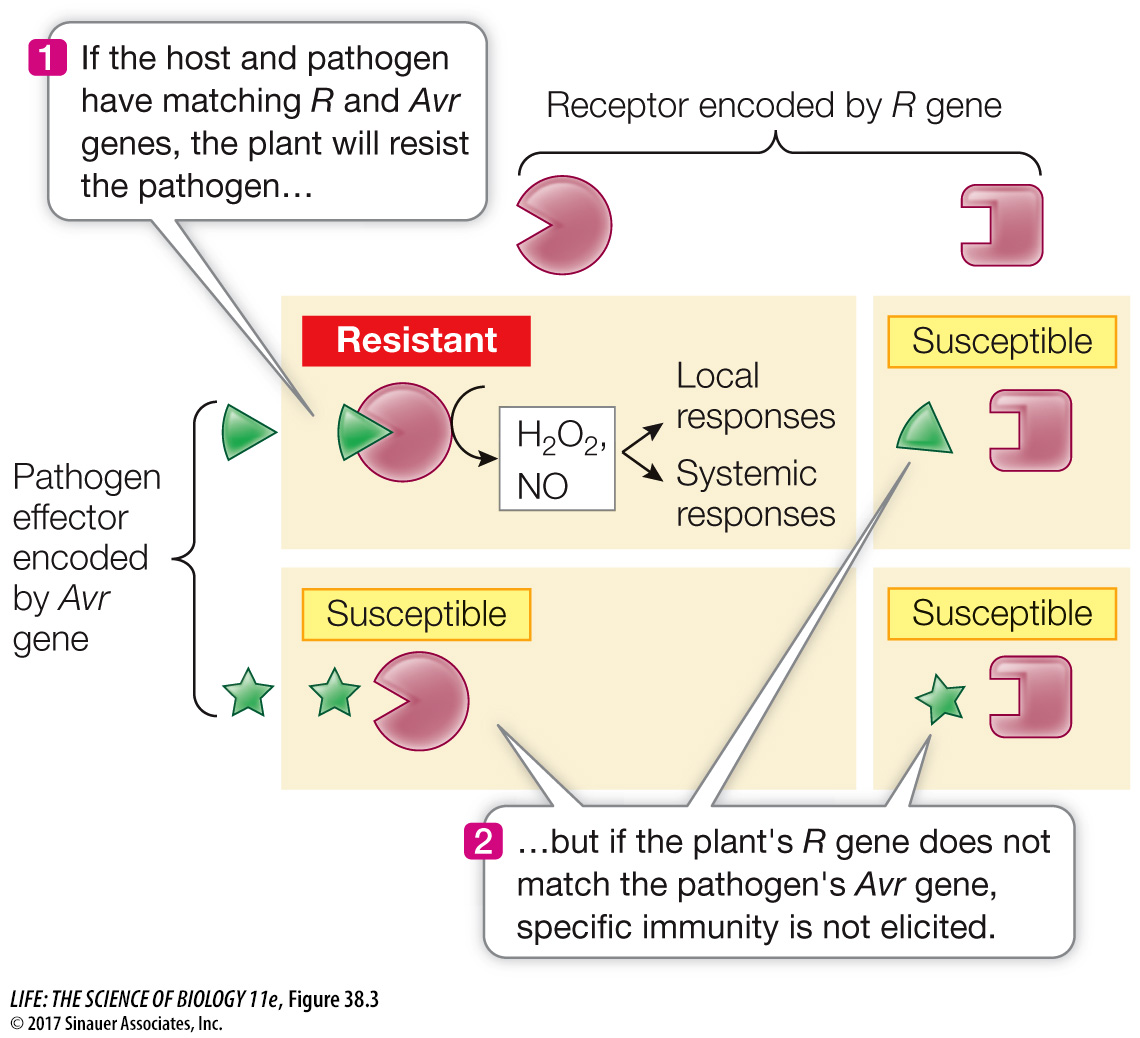Specific immunity is genetically determined
Pathogenic effectors are molecules made inside host plant cells by invaders. Often, these effectors block some aspect of *plant immunity. For example, many effectors are proteases that break down specific plant proteins involved in immune responses. So effectors enable pathogens to overcome general immunity and invade the plant, causing disease. The genes that encode effectors have evolved as part of the “arms race” between pathogens and their host plants.
*connect the concepts The concepts of the plant immune response are similar to those of the animal immune response. See Chapter 41.
So the plants fight back. They have evolved intracellular receptors that recognize specific effectors. These receptors are called R (for resistance) proteins. When an R protein binds its ligand (a specific effector), it activates the signal transduction pathways of the specific immunity response. As we mentioned above, specific immunity is stronger than general immunity, and it enables the plant to prevent growth of the pathogen and remain healthy.
R proteins are encoded by resistance (R) genes. During the middle of the twentieth century, the plant pathologist Harold Henry Flor, at North Dakota State University, realized that there is a special relationship between R genes and certain pathogen genes named Avirulence (Avr) genes. Flor studied strains of the rust fungus (Melampsora lini) and the flax plant (Linum usitatissimum). He found that specific strains of rust fungus (with particular Avr genes) were able to cause disease only in some varieties of flax—

Q: How do the elicitor and receptor recognize one another?
Recognition is by shape (like a lock and key) and by chemical interactions between the molecules, such as hydrophobic interactions and ionic interactions.